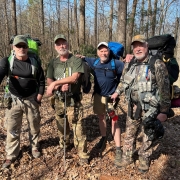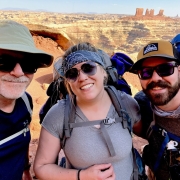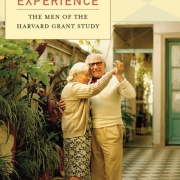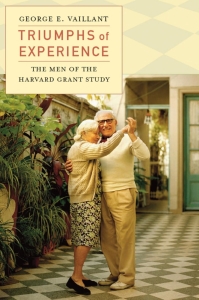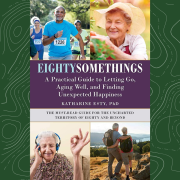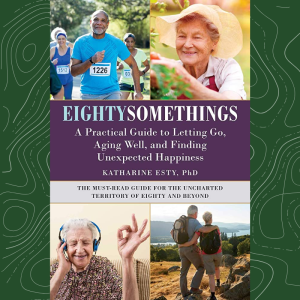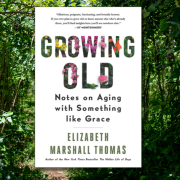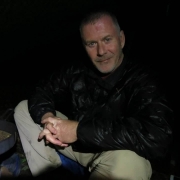How to Channel Your Parents (When They’re Gone) | Healthy Aging Series: S8, E7
“Kevin!” I’ve seen the movie (Home Alone) a 100 times and I can conjure up the scene where Kevin’s parents realize that he’s not on the plane while it’s on its way to Paris. It’s a cute movie. Kevin is “Home Alone.” No parents, no family members, and no Buzz. And let’s not forget the two completely incompetent burglars. There is, of course, a cartoonish feel to it. Somewhat “roadrunneresques.” Lots of laughs.
Life isn’t so cute and funny when, during your life, you lose one or both of your aging parents. Then, you and your adult siblings are left alone without the anchors that your parents provided all those decades in the past.
Every family is different.
Some of you lost your parent or parents when you were we were young. Some lose a parent that was not the wished-for anchor that you needed or those parents that struggled with mental illness, addictions, and their own abandonment. Some of you had to be your own anchor and had to parent yourself. And some of you have no siblings.
My Family
I’m writing this blog primarily for people who have siblings and have lost their aging parents. I have eight siblings. Our ages range from 61 to 75. My father died in 15 years ago and my mother died in 2015. Both were anchors for us. And now we are “home alone“ without those anchors.
Step up and be the sibling that channels your parents
Are there any rules for older siblings when their parents are gone? Or maybe just simple suggestions to keep from drifting “out to sea” so to speak. I think so. Think of this as a way of channeling your parents. What would your parents want? How did they hold things together. That’s what I mean by channeling. Start with this:
First, be the brother or sister that reaches out and becomes a new and different anchor for the family.
We can reach out and pull the family together in a text thread, keeping everyone informed about what’s happening with each of the brothers and sisters. One of my siblings had a medical crisis this past year and we were able to stay informed and we were excited when they made a full recovery. That brought us all together and we saw all the love and concern expressed in the text.
Some examples of Anchors
We can reach out and pull the family together in various ways. Start with a Google photos file that the siblings can share with each other. We have one called Neese Fam. This month seven of us got together and shared pictures. The two siblings that live out of state were able to view the pictures. Facebook can also be a way of sharing. Some of my siblings do not use Facebook and some people prefer to keep family issues and photos private. We can reach out and pull the family together by having lunch, making a phone call, or having a camp out at the local campground. I hear people complain that they never hear from family members. I often remind them that they have a phone and maybe they should consider making the phone call.
The second suggestion involves agreeing to leave politics and religion at home.
There are nine of us and we have a lot of different views of religion, and a lot of different views of politics. Our country is polarized, and families must be militant to keep that polarization out of their get togethers. Make it a rule: no politics and religion. There is plenty to talk about! At our last get together, we talked about health issues. When senior adults get together, those get togethers usually turns into an “organ recital.” You know what I mean: talking about body organs, like the prostate, the ears, the heart, and so on. We gossip when we get together. Gossip can be good when done right. It’s a way of sharing what you know about family members that others may not know. Of course, avoid being judgmental, but it can pull family members together.
The third suggestion is to learn to compromise and find a consensus.
I’m so proud of my family. Both of my parents wanted to be cremated. As my father’s next of kin, my mother had to sign the agreement to have him cremated. When my mother died, she had nine next of kin, and some of my siblings did not like the idea of having her cremated. The document was passed around at the local restaurant where we met, and everyone signed it.
The fourth suggestion is to forgive and forget.
This means the sins of omission and commission. Nothing pulls members apart like hurt feelings. I was able to do the eulogy at my mother’s memorial service. If there was any person that was justified in holding a grudge and holding resentments, it was my mother. I’m not listing details but take my word for it. Here’s what I told the gathering at her memorial service. “Our mother,” I preached, “didn’t let stupid shit rob her of her peace and serenity.” She didn’t let it push her family members and friends away. Most family members get upset, get their feelings, hurt, and become estranged because of stupid shit. It’s usually about religion or money, or sex and almost always forgivable. Everyone thinks, the offense against them is unforgivable, but put yourself in the offender shoes. If you want forgiveness from others, then forgive others of the stupid shit they do to you.
Channeling Your Parents
Most of us have parents that were strong and important influences in the lives of their children. They were anchors.
What I’ve been talking about is providing the same affect in our families that our parents provided for us when they were with us. These suggestions are in some ways channeling your parents because that is most likely what they did for the family when they were living.
Channeling a parent, be it your mother or father is what you do when you take on the role as a surrogate anchor, or leader, for your family. It doesn’t matter who does it. Anybody can channel their parents. You channel your parents by being the kind of person that would promote the things that they promoted when they were living. Nothing would make them prouder!
Post Script: I channeled my parents this past weekend. It was Easter Weekend. I orchestrated a one-night backpacking trip into the Hoosier forest with three of my brothers. It was a wonderful weekend.
We talked about our parents. We talked about our children. We told stories about growing up together.
We laughed as we struggled to cross a stream. We shared our freeze-dried meals (Coconut Curry Chicken.) We sat and stood around the warm campfire and gossiped!
No Politics. No religion. Just Love. Just what Mom and Dad would have wanted!
To see more entries in the Healthy Aging series, click here.

